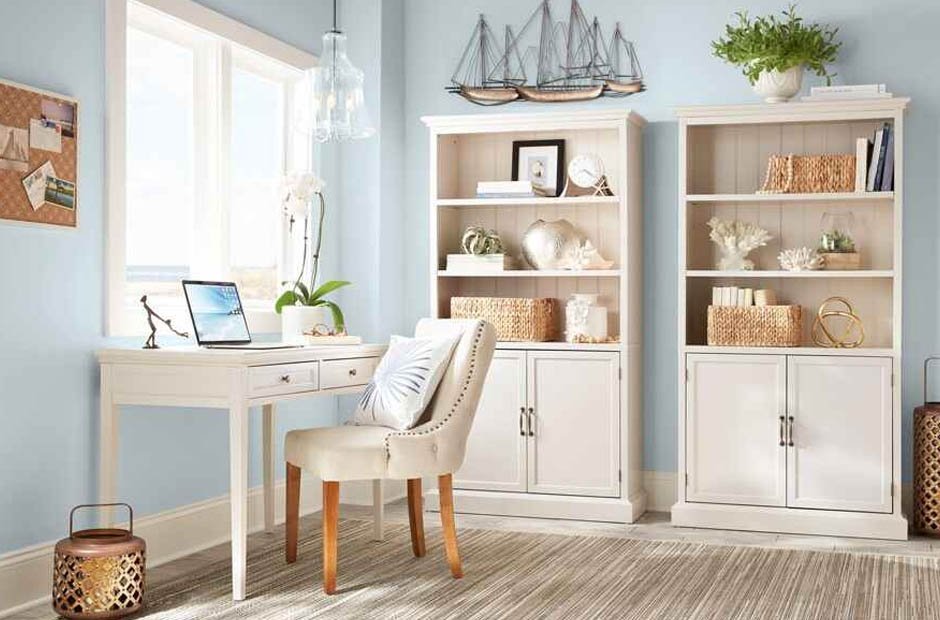In the era of remote work and online learning, home offices and study spaces have become integral parts of our daily lives. Creating an environment that fosters focus, creativity, and productivity is essential for success. Vineyard Property Management experts notes that one often overlooked aspect of these spaces is lighting. Proper lighting not only illuminates the room but also affects our mood, energy levels, and overall well-being. In this article, we will explore the significance of lighting in home offices and study spaces and provide insights into how the right lighting fixtures can enhance productivity and elevate the overall experience.
Understanding the Impact of Lighting
Lighting plays a pivotal role in setting the tone and ambiance of any space. In home offices and study areas, the type of lighting used directly influences our ability to concentrate, read, write, and work on tasks effectively. On the other hand, Visiting lighting stores for help can create a comfortable and inviting atmosphere, making the space conducive to work and study.
Natural Light
Natural light is the gold standard when it comes to illuminating any space. It not only provides bright and even illumination but also offers a myriad of health benefits. Exposure to natural light helps regulate our circadian rhythm, improving sleep patterns and overall well-being. When designing home offices or study spaces, prioritize positioning workstations near windows to maximize natural light. Use light curtains or blinds to control glare while allowing ample daylight to flood the room.
Tailored Illumination for Work and Study
Task lighting is essential for focused activities such as reading, writing, or working on a computer. Desk lamps with adjustable arms and brightness settings are excellent choices for providing targeted illumination. LED desk lamps are energy-efficient and offer various color temperatures, allowing users to customize the lighting based on the task at hand. Position task lights strategically to minimize shadows and ensure even lighting across the workspace, reducing eye fatigue during extended periods of work or study.
Creating a Welcoming Atmosphere
Ambient lighting sets the overall mood of a room. In home offices and study spaces, ambient lighting should be soft and indirect, creating a warm and inviting environment. Ceiling-mounted fixtures, such as chandeliers or pendant lights with dimmer switches, can provide ambient illumination while allowing users to adjust the brightness according to their preference. Indirect lighting, such as LED strips mounted on shelves or under cabinets, adds a subtle glow to the room, enhancing its ambiance without causing glare on screens or work surfaces.
Color Temperature and Its Influence
Color temperature, measured in Kelvin (K), refers to the warmth or coolness of light. Lower Kelvin values (around 2700K) represent warm, yellow-toned light resembling the glow of traditional incandescent bulbs. Higher Kelvin values (5000K and above) produce cool, blue-toned light similar to daylight. For home offices and study spaces, a color temperature of around 4000K is ideal. This neutral white light mimics natural daylight, promoting focus and productivity. Avoid using overly warm or cool light, as it can create discomfort and affect the overall atmosphere of the room.
Smart Lighting
Smart lighting systems have revolutionized the way we control and interact with light. Smart bulbs and fixtures can be adjusted remotely via smartphones or voice assistants, allowing users to change brightness levels, color temperatures, and even set lighting schedules. These systems offer unparalleled convenience, enabling users to create personalized lighting scenes for different tasks or moods. Smart lighting also contributes to energy conservation by allowing users to turn off lights remotely, minimizing unnecessary energy consumption.
Conclusion
In the realm of home offices and study spaces, lighting is not merely a functional necessity but a design element that can transform the entire experience. By understanding the impact of natural light, integrating task lighting for focused activities, incorporating soft ambient lighting, choosing the right color temperature, and embracing smart lighting solutions, individuals can craft the perfect illuminated haven for work, study, and creativity.
Investing in thoughtfully selected lighting fixtures not only enhances productivity and well-being but also adds a touch of elegance and sophistication to the space. As we continue to navigate the demands of remote work and virtual learning, creating an environment that seamlessly blends functionality and aesthetics through thoughtful lighting design is the key to transforming any home office or study space into an inspiring oasis of productivity and creativity.


